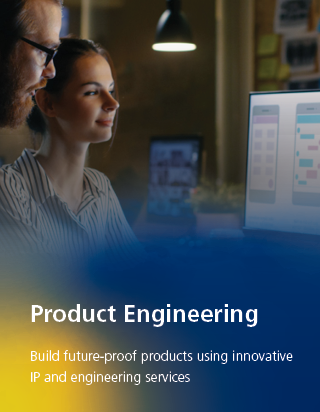Open Success with Comprehensive Engineering Support: Laying Out Engineer Services, Measured Structure Surveying, and More
Making The Most Of Source Allowance With Strategic Surveying Practices
In the realm of calculated source allotment, the technique of evaluating stands as a crucial device for companies intending to optimize their performance and impact. By methodically accumulating data and understandings, calculated checking practices supply a roadmap for educated decision-making and resource distribution. Through the lens of stakeholder involvement, these surveys give a way to take advantage of the varied point of views and needs that form a company's landscape. However, the true power of critical surveying exists not simply in information collection, however in the capability to transform this information right into workable strategies that drive a company in the direction of its goals. With this lens, we begin to unravel the detailed interplay in between surveying practices and source optimization, establishing the phase for a deeper expedition of the techniques and techniques that underpin this essential procedure.
Value of Strategic Checking Practices
Strategic checking techniques play an essential duty in figuring out the reliable allocation of sources within organizations. By carrying out strategic studies, business can gather valuable information and insights that help in making notified choices regarding the allowance of sources such as time, workforce, and budget. These methods give an organized strategy to comprehending the current state of the company, identifying locations for renovation, and aligning resources with strategic objectives.
One essential value of tactical surveying techniques is that they help organizations prioritize their campaigns based on real-time comments from stakeholders. This guarantees that sources are guided towards jobs or tasks that have the highest impact on attaining business objectives. Additionally, calculated surveys enable business to adjust to altering market conditions, consumer preferences, and interior abilities by constantly evaluating and keeping track of source appropriation strategies.
Event Insights From Stakeholders
Including feedback from stakeholders is important for organizations executing critical evaluating practices to properly designate resources and drive decision-making procedures. Stakeholders, including workers, consumers, suppliers, and community members, hold beneficial understandings that can significantly impact the success of critical campaigns. construction surveys. Involving with stakeholders through studies, interviews, emphasis teams, and responses sessions permits companies to obtain a much deeper understanding of their preferences, worries, and needs
By gathering understandings from stakeholders, companies can recognize vital locations for renovation, prioritize resource allotment based upon actual needs, and align tactical objectives with stakeholder assumptions. Furthermore, entailing stakeholders in the decision-making process promotes a sense of possession and commitment, resulting in raised buy-in and assistance for tactical efforts.
Additionally, stakeholders typically offer special viewpoints and ingenious concepts that might not have been taken into consideration internally. By actively paying attention to and including stakeholder comments, companies can improve their tactical surveying methods, make even more enlightened choices, and ultimately accomplish much better end results.
Utilizing Data-Driven Approaches
Making use of data-driven approaches is paramount for companies looking for to enhance the efficiency of their source allowance approaches and decision-making procedures. By leveraging data analytics and progressed technologies, organizations can draw out valuable understandings to enhance resource allowance, determine trends, and make informed choices. Data-driven approaches allow organizations to allot sources based on empirical evidence as opposed to instinct, bring about extra reliable and reliable results.

Furthermore, companies can employ predictive analytics to forecast future source requirements and allocate sources proactively. Topographical Surveying. By leveraging historical information and pattern evaluation, organizations can anticipate need fluctuations and readjust their resource allotment methods accordingly. In general, welcoming data-driven approaches encourages organizations to make well-informed decisions that make the most of resource allowance efficiency and drive sustainable growth
Identifying Areas for Renovation
Identifying locations for enhancement is a vital action in the procedure of maximizing resource allotment. By recognizing where traffic jams or inadequacies exist within the company, decision-makers can route resources in the direction of resolving these specific locations.
One efficient approach for recognizing areas for enhancement is carrying out routine performance evaluations across different measured building surveying divisions or features. With these examinations, companies can gather beneficial understandings right into locations that require focus or restructuring. In addition, seeking responses from workers in any way levels of the organization can offer an one-of-a-kind viewpoint on possible locations for enhancement.
Furthermore, using devices such as process mapping, SWOT analysis, and benchmarking can assist in recognizing areas for renovation by highlighting strengths, weaknesses, possibilities, and hazards within the organization. By methodically checking out these variables, companies can develop a thorough understanding of where sources must be allocated to drive efficiency and performance.
Practical Tips for Application

Conclusion
Finally, tactical surveying practices play a critical role in optimizing source allocation by gathering understandings from stakeholders, making use of data-driven approaches, and identifying areas for renovation. Executing functional ideas for reliable surveying can result in more informed decision-making and maximized source allowance techniques. By prioritizing calculated checking methods, companies can guarantee that resources are allocated successfully and effectively to satisfy their objectives and goals.
In the world of tactical source allowance, the method of surveying stands as a pivotal device for organizations aiming to optimize their effectiveness and influence.Strategic checking techniques play a crucial role in establishing the effective appropriation of sources within companies.Integrating comments from stakeholders is crucial for companies applying tactical checking techniques to efficiently allot sources and drive decision-making procedures.In addition, organizations can employ predictive analytics to anticipate future resource needs and designate resources proactively. By focusing on tactical evaluating techniques, companies can ensure that sources are alloted efficiently and effectively to meet their objectives and goals.